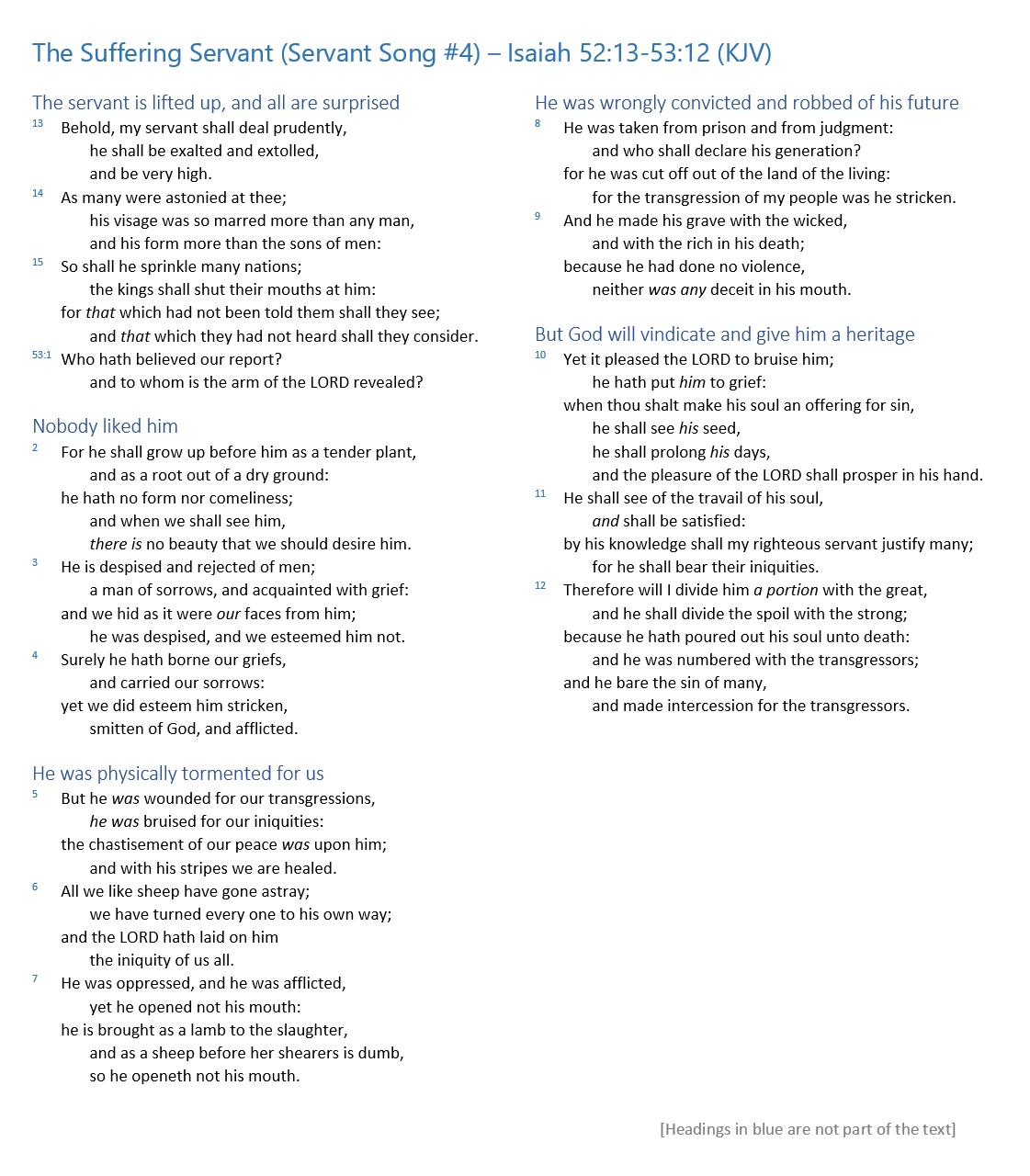In short
The last and most famous of the servant songs, it vividly illustrates the sacrifice, suffering, and vindication of this messianic figure.
Why it is important
It is quoted repeatedly in the New Testament to describe Jesus Christ.
- 52:15 in Rom 15:21
- 53:1 in Jn 12:38 and Rom 10:16
- 53:4 is probably Matt 8:17
- 53:5 is 1Pe 2:24
- 53:6 is 1Pe 2:25
- 53:7-8 is Acts 8:32-33
- 53:9 is 1Pe 2:22 (and implies Jesus’ death with criminals)
And then there are subtle allusions and very obvious ones, too. 53:12 sounds like Jesus’ praying for them who “know not what they do,” and 53:11 screams Rom 5:18-19.
What is in this poem
It’s such clear prophecy of Jesus Christ, that it’s hard for believers to unsee it and focus on the overall poem.
I broke the poem into five sections. They seem kind of symmetrical.
The servant:
- A) Is exalted (52:13-53:1)
- B) Grew up as an outcast (vs. 2-4)
- C) Suffers for us (vs. 5-7)
- B’) Is judged like an outcast (vs. 8-9)
- B) Grew up as an outcast (vs. 2-4)
- A’) Is exalted (vs. 10-12)
Theology and doctrine
The first verse (52:13) has this phrase “high and lifted up,” about the servant, which is the exact wording of the crazy vision of God earlier in Isaiah (6:1). And I mean that in HEBREW it’s exactly the same in both places. It’s also the same in English in the ESV, but KJV and NASB use different wording in each verse. Strange, because that, to me, screams that the servant IS God. Also, it rings of John 3:14-15, “…so must the Son of Man be lifted up, that whoever believes in him may have eternal life.”
And I could spend hours on the Christian interpretation of this, but so can you. What I wanted to look at today is the poem itself.


No responses yet